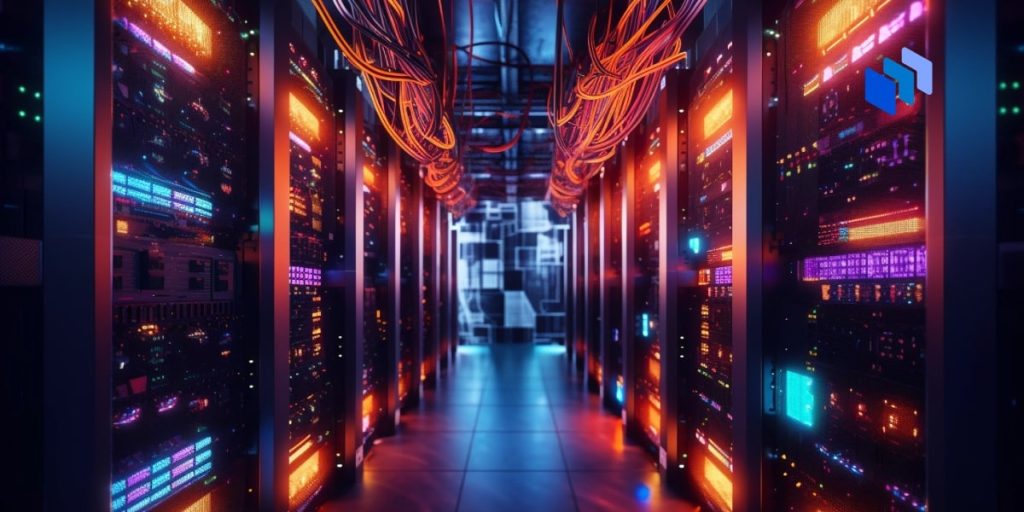Artificial Intelligence (AI) is like any other technology — it needs an environment in which to operate. The underpinnings of the entire digital ecosystem have evolved over decades, of course, and are now sufficient to provide essential support for intelligent technologies.
But how does this all fit together, and what changes are in store now that workloads gravitate toward AI applications?
What Are The Components of AI Infrastructure?
Simply put, AI infrastructure is the collection of hardware, firmware, software, and other elements that allow intelligent algorithms to function.
To do this, infrastructure must support the ability to develop, test, implement, and govern these algorithms and do so at a scale that enables them to generate meaningful results.
READ MORE: How Does ChatGPT Work?
Much of the critical infrastructure will likely be drawn from the systems that digital organizations have already built. Still, future deployments will, by necessity, be tailored to the needs of AI.
The global data footprint will also come into play, primarily to provide the information needed to train new models and produce accurate results for the required output. For this reason, how AI interacts with infrastructure is just as important as the infrastructure itself.
What Hardware Elements are Required?
The same three hardware elements that exist today will continue to drive AI infrastructure in the future, that is, computing, storage, and networking.
The core technology will continue to be the processing unit. However, AI will rely more on GPUs (graphical processing units) and TPUs (tensor processing units) optimized for high-performance computing (HPC) workloads.
Storage volumes will also require massive expansion, not just to handle all the data that AI consumes but all it generates as well.
All forms of basic storage will likely play a role in AI performance, from the fastest flash technology to slower but more voluminous tape solutions.
While different types of AI, such as machine learning and deep neural networking, will rely on certain types of storage more heavily than others, it is fair to say that all storage will require top performance in terms of scalability, reliability, and security.
The same goes for networking. Whether enabling access to local data or caches worldwide, network performance will determine the efficacy of any AI solution.
The twin imperatives of faster and denser that have driven networking technologies to this point are likely to accelerate once AI workloads become commonplace, as well as the need for broader interoperability, lower power consumption, and deep visibility.
What Software Elements are Required?
The software side of AI infrastructure is growing increasingly diverse by the day. New platforms, tools, and techniques are coming out of development rapidly and are then being refined and integrated to create the libraries and frameworks needed to churn out intelligent applications.
Programming languages like Python, C, and Java (along with their many variants) are quickly gravitating toward AI development, while TensorFlow, Jax, XCBoost, and other platforms are allowing organizations to quickly test new models and push them into production.
Additional tools for preparing data, monitoring and managing performance, optimizing resource consumption, and a host of other activities are becoming too numerous to count.
How Should This Environment Be Architected?
Speed and scale are likely to be the key drivers in AI infrastructure design. To be truly effective, AI must parse a lot of data (terabytes at minimum) in record time. Successful models will also expand in size and scope very quickly, so the ability to provision new resources quickly will also be invaluable.
For this reason, much of AI infrastructure is likely to be highly standardized and probably modular, all to ensure broad availability and streamlined service and support.
This will also help to keep costs down, both in terms of hardware acquisition and operational management. And because AI is likely to draw on sensitive data in support of critical applications, security must be a core element, not an afterthought.
What Performance Metrics Should I Use?
In most respects, AI performance rests on the same principles of standard computing, that is, speed, uptime, power consumption, and networking factors like throughput, connectivity, and fault tolerance.
Most AI-specific metrics measure things like regression (used to evaluate mathematical outputs over time) and various classification functions like accuracy and precision. These generally gauge the performance of the model, however, not the underlying infrastructure.
What Are the Advantages and Disadvantages of Local, Cloud and Hybrid Deployments?
It is hard to see how an AI model can provide useful outputs using in-house data alone, so access to the world data ecosystem will be crucial.
Some of the more proprietary approaches will likely be housed on local infrastructure to support the models themselves, but even these should eventually migrate to hybrid or all-cloud infrastructure for efficiency and cost management.
READ MORE: The Best Cloud Platforms
However, most generic uses of AI are likely to originate in the cloud. Many providers are already offering complete AI platforms that can be used for development, testing, and deployment. Ultimately, the decision between cloud or on-premises will depend on the nature of the model and the data it requires.







